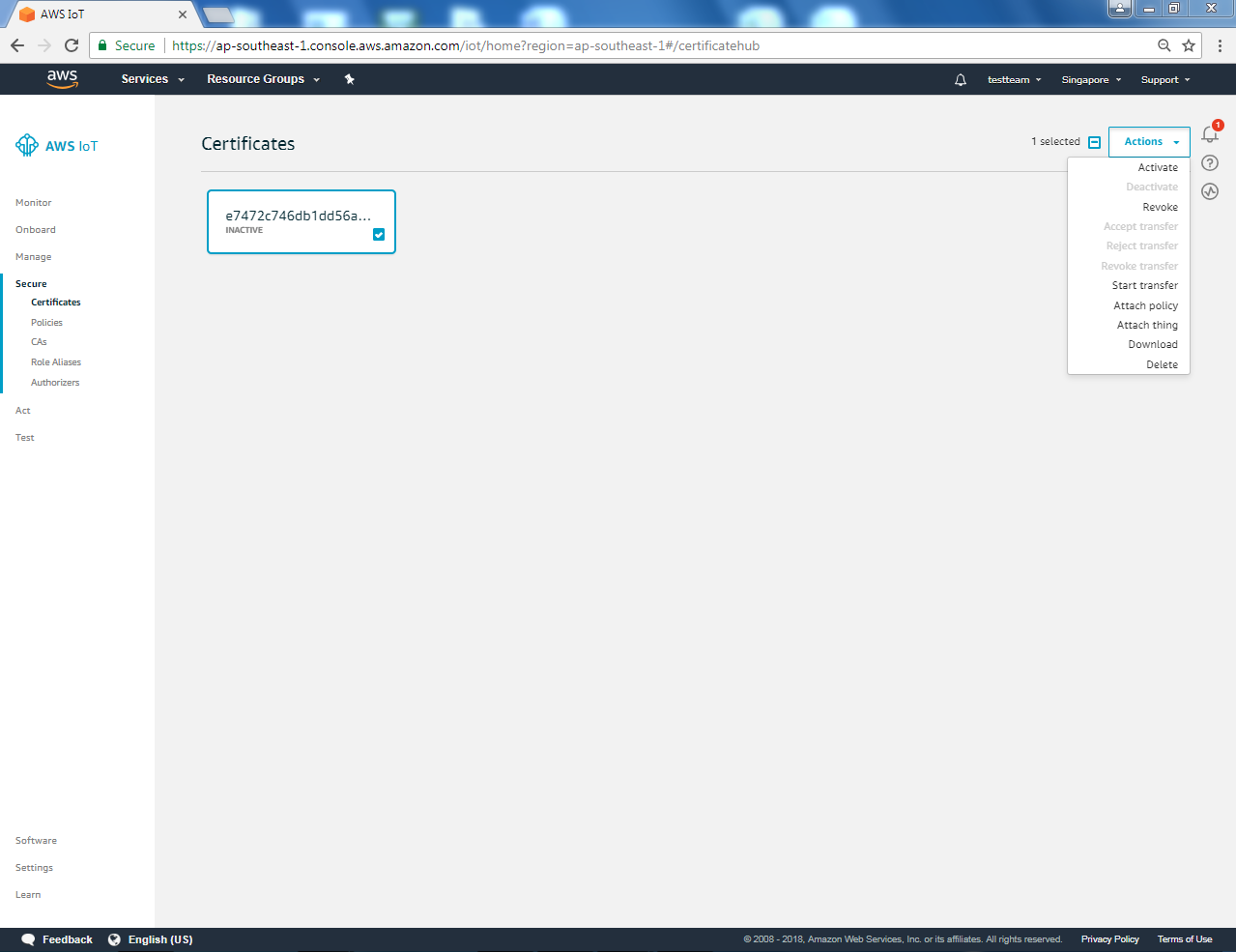Generate Public Key From Private Key Aws
- Generate Rsa Public Key
- Generate Public Key Aws
- Generate Public Key From Private Key Aws Server
- Generate Public Private Key Pair
A lost SSH public-key or a web service generates an SSH key but does not provide the public-key part to you. What to do now? There is a solution for this situation.
The following command generates a file which contains both public and private key: openssl genrsa -des3 -out privkey.pem 2048 Source: here. With OpenSSL, the private key contains the public key information as well, so a public key doesn't need to be generated separately. How can we extract the public key from the privkey.pem file? For imported certificates, you generate the key pair. The public key becomes part of the certificate. ACM stores the certificate and its corresponding private key, and uses AWS Key Management Service (AWS KMS) to help protect the private key.
When you have an SSH key you need the public key to setup SSH passwordless login with SSH-key. But if you have lost the public key part but still have the private key, there is a way to regenerate the key. Warcraft 3 cd key battlenet generator.
Generate Rsa Public Key
To install the public key, Log into the server, edit the authorizedkeys file with your favorite editor, and cut-and-paste the public key output by the above command to the authorizedkeys file. Save the file. Configure PuTTY to use your private key file (here keyfile.ppk). Then test if login works. See configuring public key authentication for. If you create the key via the ec2 console, AWS will keep the public key in the system automatically and your browser will download the private key. See Creating a Key Pair Using Amazon EC2. (this second approach will save you having to upload it to ec2 keypairs). To install the public key, Log into the server, edit the authorizedkeys file with your favorite editor, and cut-and-paste the public key output by the above command to the authorizedkeys file. Save the file. Configure PuTTY to use your private key file (here keyfile.ppk). Then test if login works. See configuring public key authentication for PuTTY.
Generate Public Key Aws
With the public key missing, the following command will show you that there is no public key for this SSH key.
The -l option instructs to show the fingerprint in the public key while the -f option specifies the file of the key to list the fingerprint for.
To generate the missing public key again from the private key, the following command will generate the public key of the private key provided with the -f option.
The -y option will read a private SSH key file and prints an SSH public key to stdout. The public key part is redirected to the file with the same name as the private key but with the .pub file extension. If the key has a password set, the password will be required to generate the public key.
To check the details of the generated public key execute the following command as shown above.
The output of this command shows the key size as the first column, the fingerprint as the second column and after the file name, the type is shown in brackets. In the example above, a 4096 bit RSA key.
Read more of my posts on my blog at http://blog.tinned-software.net/.
Related posts:
How do I convert my Amazon Elastic Compute Cloud (Amazon EC2) Privacy Enhanced Mail (.pem) file to a PuTTY Private Key (.ppk) file? Or, convert a .ppk file to a .pem file?
Short Description
PuTTY doesn't natively support the private key format (.pem) generated by Amazon EC2. You must convert your private key into a .ppk file before you can connect to your instance using PuTTY. You can use the PuTTYgen tool for this conversion. This tool, available for both Windows and Unix operating system, can convert keys.
Resolution
Windows - install PuTTYgen
Most Windows operating systems have PuTTY installed. If your system doesn't, download and install PuTTYgen.
Windows - convert a .pem file to a .ppk file
Start PuTTYgen, and then convert the .pem file to a .ppk file. For detailed steps, see Convert Your Private Key Using PuTTYgen.
Windows - convert a .ppk file to a .pem file
- Start PuTTYgen. For Actions, choose Load, and then navigate to your .ppk file.
- Choose the .ppk file, and then choose Open.
- (Optional) For Key passphrase, enter a passphrase. For Confirm passphrase, re-enter your passphrase.
Note: Although a passphrase isn't required, you should specify one as a security measure to protect the private key from unauthorized use. Using a passphrase makes automation difficult, because human intervention is needed to log in to an instance or to copy files to an instance. - From the menu at the top of the PuTTY Key Generator, choose Conversions, Export OpenSSH Key.
Note: If you didn't enter a passphrase, you receive a PuTTYgen warning. Choose Yes. - Name the file and add the .pem extension.
- Choose Save.
Unix or Linux - install PuTTY
Install PuTTY, if it's not already on your system.
Important: A PuTTY package is provided by the Extra Packages for Enterprise Linux (EPEL) repository. You must enable the EPEL repository before you install PuTTY.
To install PuTTY, run one of the following commands:
RPM-based

Dpkg-based
Unix or Linux - convert a .pem file to a .ppk file
On the instance shell, run the puttygen command to convert your .pem file to a .ppk file:
Unix or Linux - convert a .ppk file to a .pem file
Run the puttygen command to convert a .ppk file into a .pem file:
Related Information
Anything we could improve?
Generate Public Key From Private Key Aws Server

Need more help?